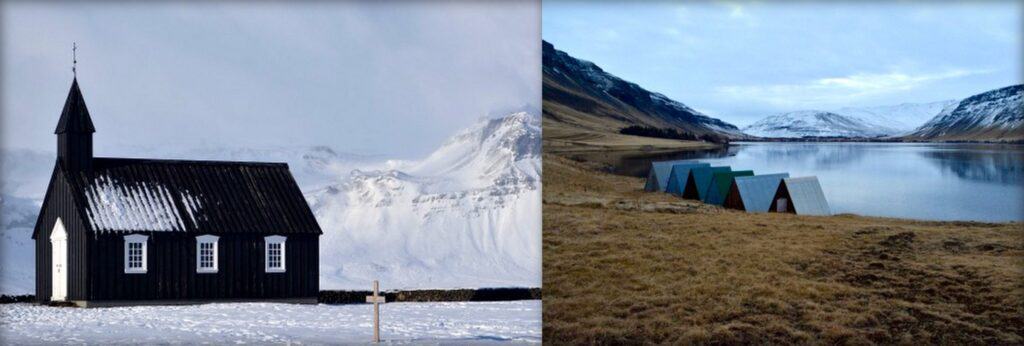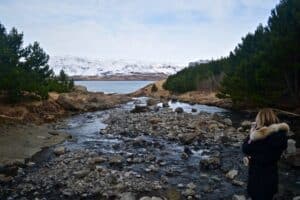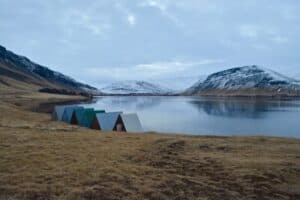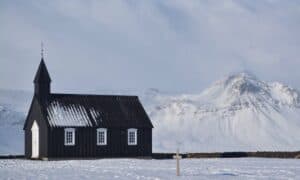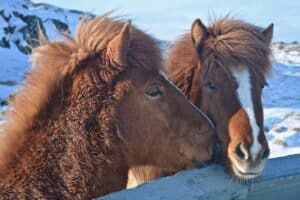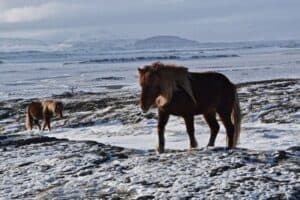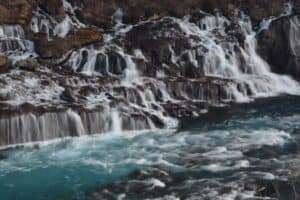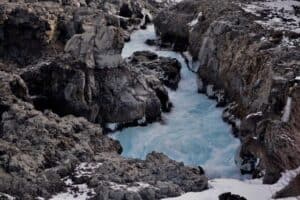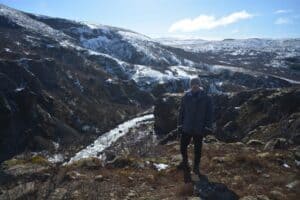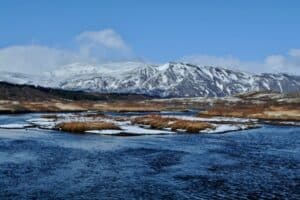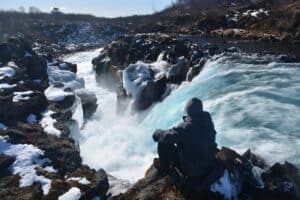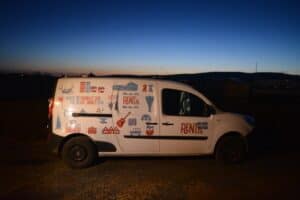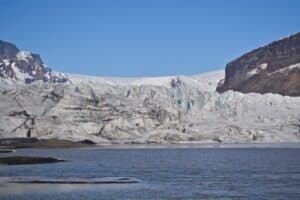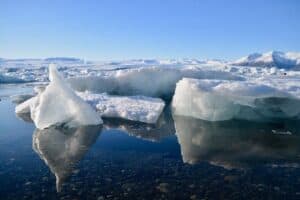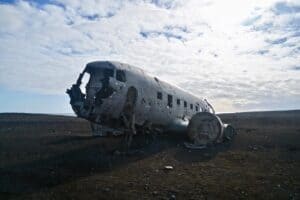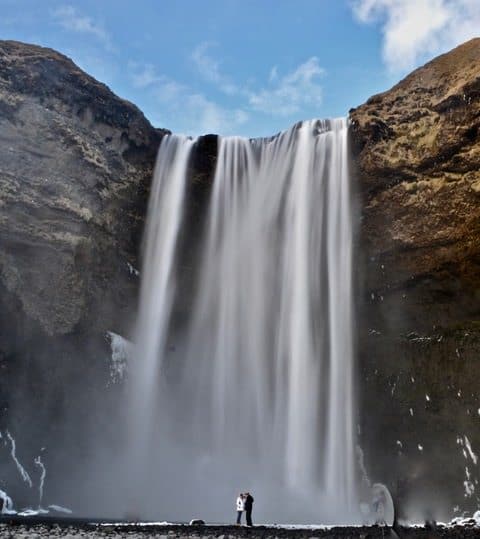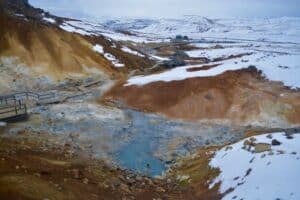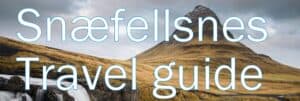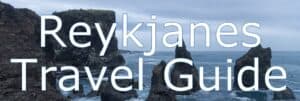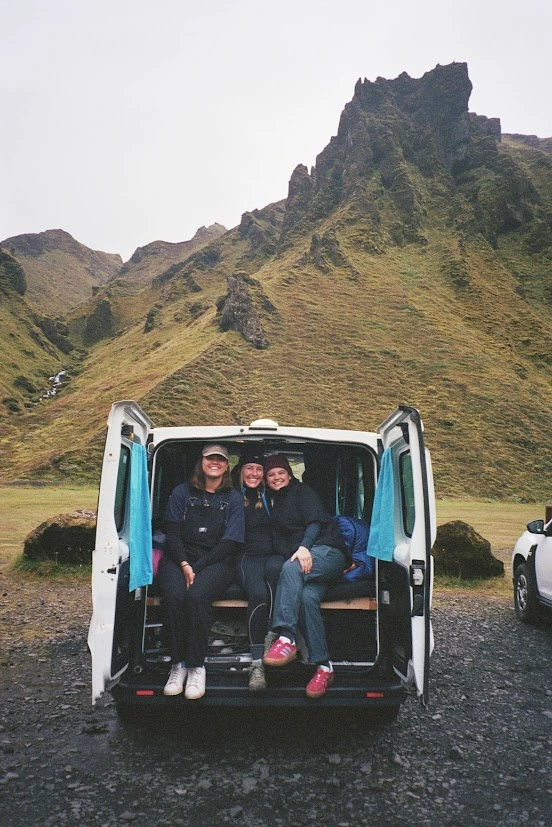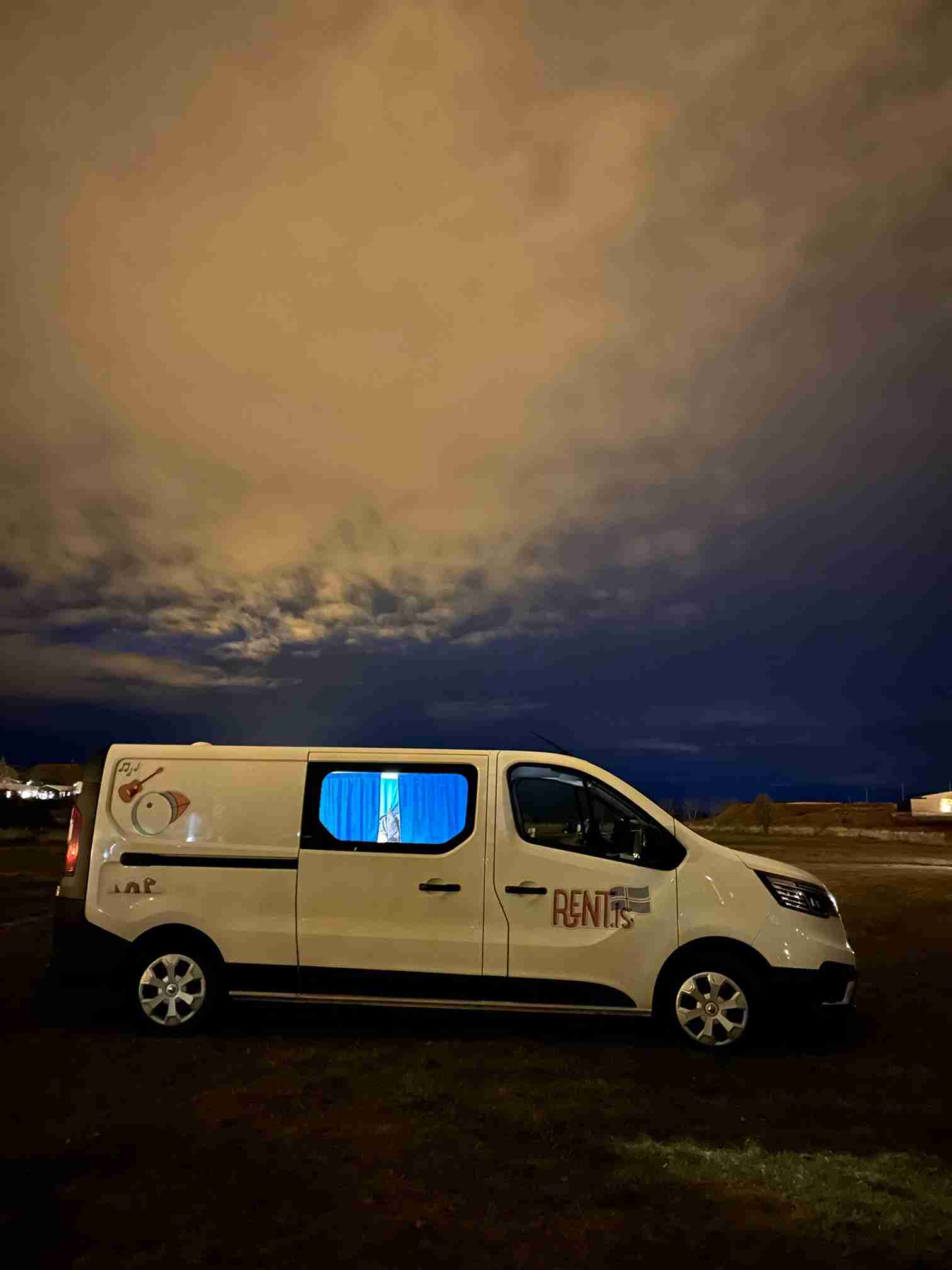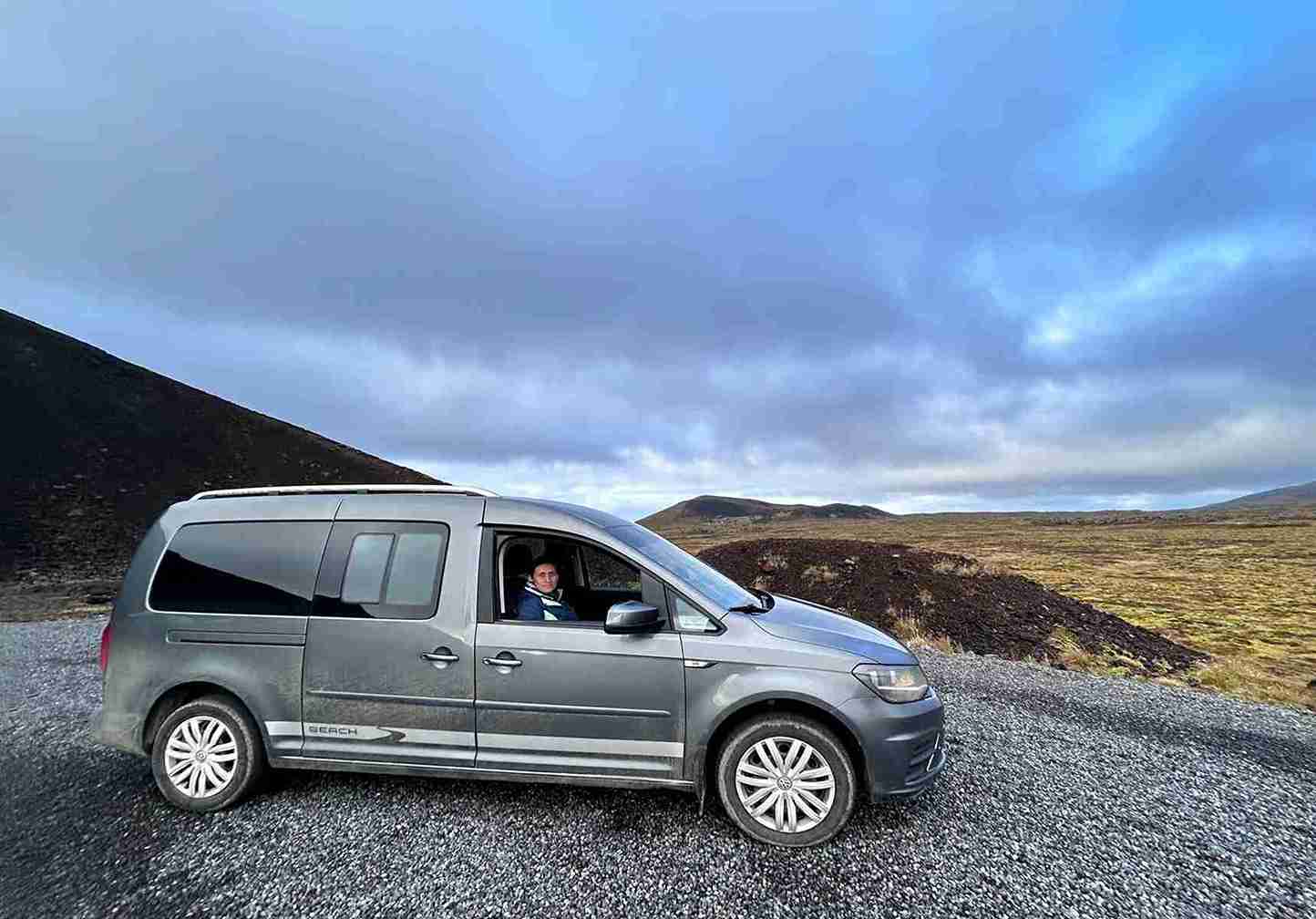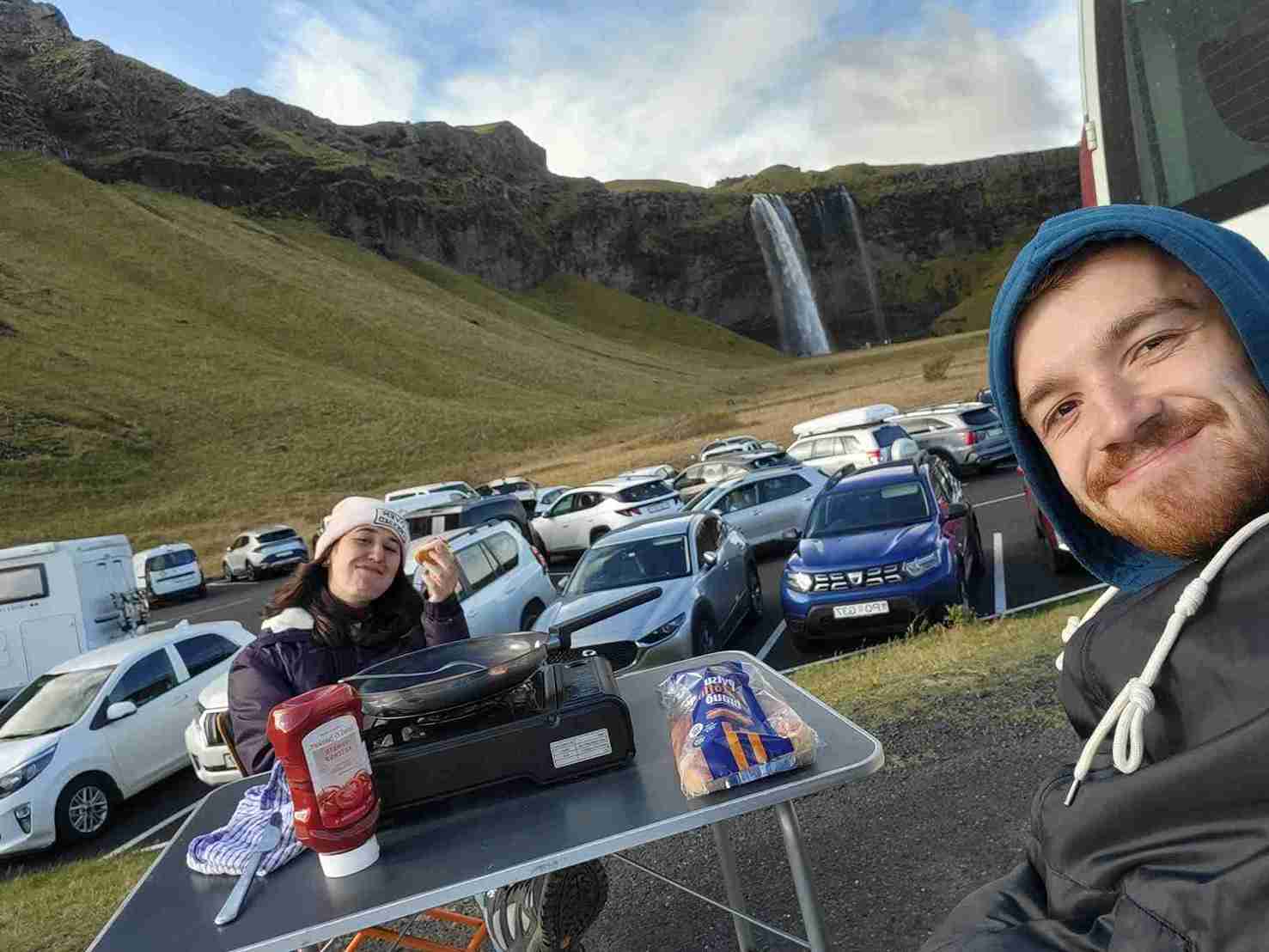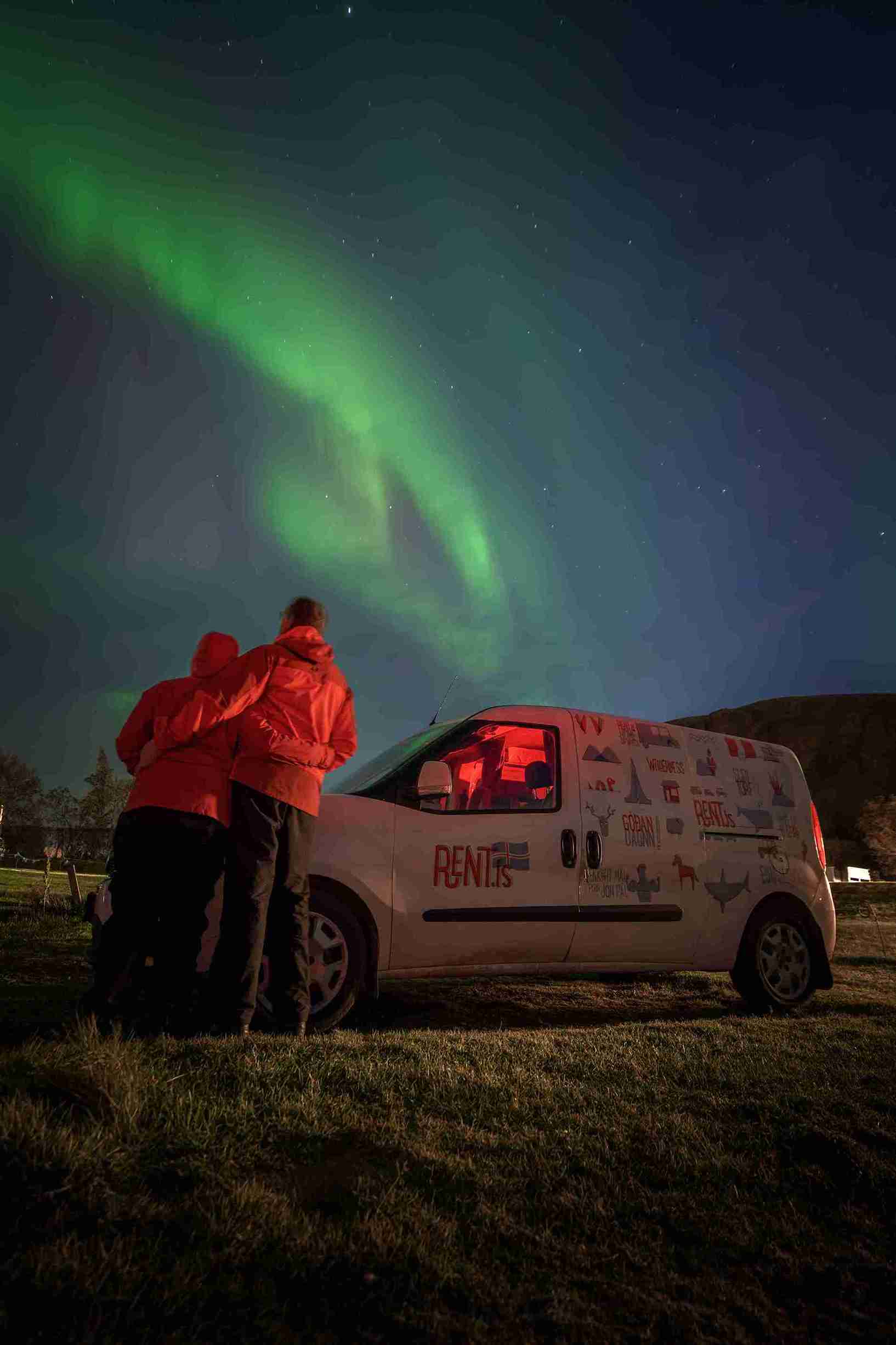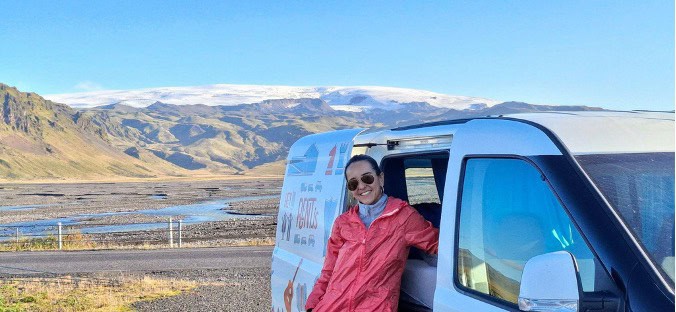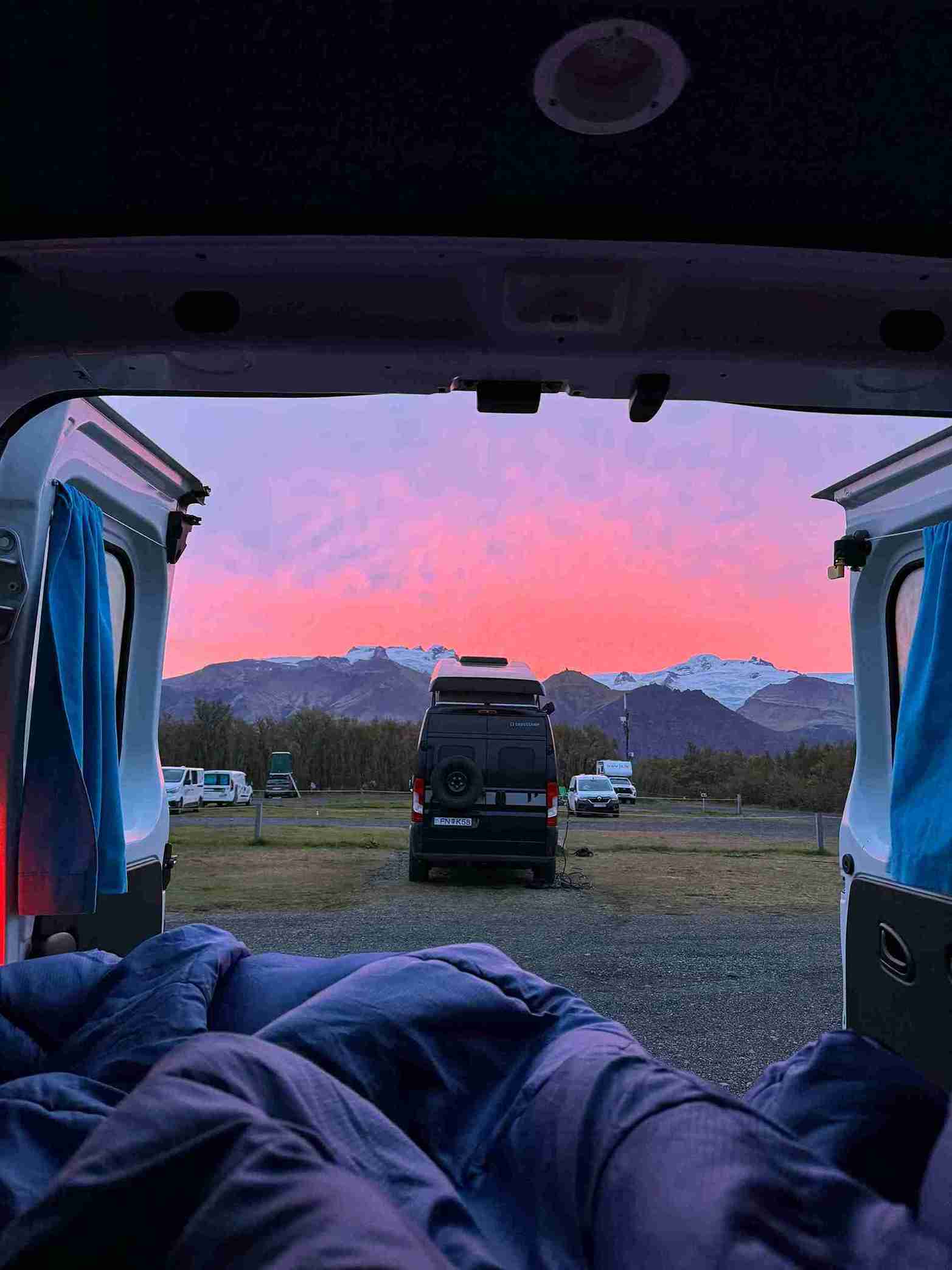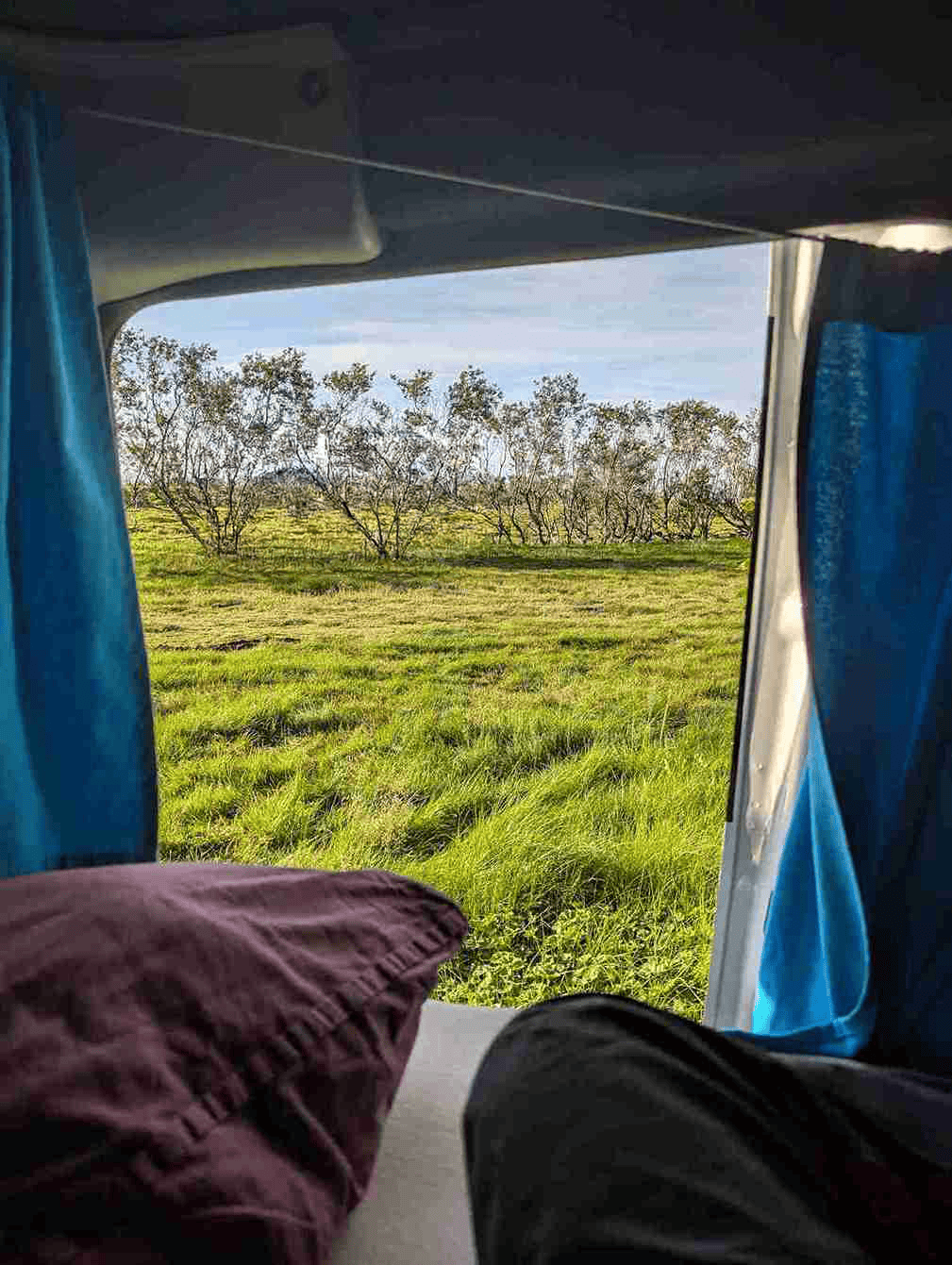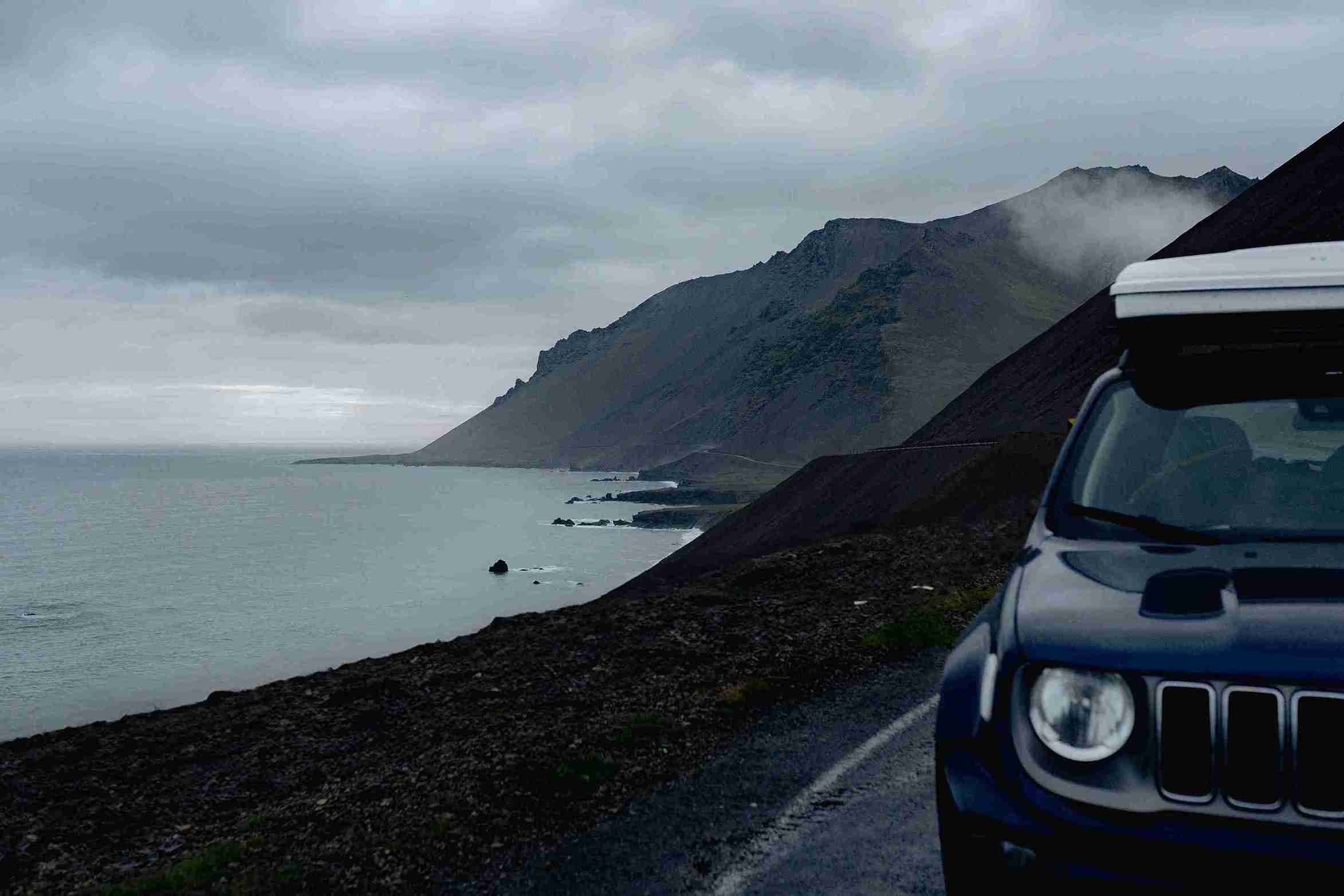Many people said “Why Iceland” when Steve and I decided this would be the place of our next adventure. Our response was always “Why not?!” For those who are not familiar with Iceland it may appear as cold, icy (I guess it is in the name), unpredictable weather, and isolated. Yes, the country is known as the land of fire and ice, and the above may be partly true, but Iceland is a land of beautiful contrasts, adventure, and a great way to experience the strength of nature. Most people plan well in advance their itinerary for Iceland as there is a lot to do on what is considered a relatively small island, but Steve and I were a bit of last minute planners on this trip. So we researched some of the top things we would like to see and decided the best way to do it while still leaving us plenty of room for spontaneity was to road trip it. So we booked a camper van through Rent.is and a mere 3 weeks later we were boarding our plane at Toronto Pearson Airport, waving goodbye to home in “the six”, and starting our Icelandic adventure.
A surprisingly quick 5 hour flight and we had landed at Keflavik Airport. With cloudy eyes and foggy brains from the flight, we took a little while to figure out whom we were supposed to meet to take us to our camper van. Quick tip, the main meeting area at Keflavik airport is full of people holding signs to various companies. Ensure you read each one carefully as there is sometimes more than one rental company on one sign. The friendly people at Rent.is where we picked up our Renault Kangoo Camper gave us the quick need to know facts of the van and we were on the road. Steve and I had no fixed plans just knew the general areas and directions we wanted to go. Thankfully, the camper van had WiFi on board so we decided our first destination would be the Snæfellsjökull Peninsula, we plugged it into the GPS and started our journey northwest.
Most people use the tunnel under bay to bypass the Hvalfjörður as it cuts off the 30km deep fjord. Hvalfjörður translates into Whale Fjord after the number of whales that used to be seen there. Unfortunately, on our drive we did not see any whales in the fjord but we did see many breathtaking views. Our first one was a short side road off the main highway around the Fjord we saw a sign for a point of interest and made the turn off. We were not disappointed. We came across this beautiful lake with sleepy mountains in the background, the stillness and quiet surrounding us as we got out of the van. In this moment of peacefulness Iceland stole our hearts, and we knew this was going to be an incredible adventure.
After a quick power nap by the quiet lake we got back on the road. We quickly realized that road tripping was the best idea. Not only was it your hotel on wheels it was honestly the best way to explore. The roads are great for travellers with lots of rest stops and indications for points of interest. However, we soon realized that even though GPS says a 3 hours drive it can easily take 6 hours in Iceland, as there are so many interesting and beautiful spots to explore on the way. So we decided that since we had no fixed plans we would stop whenever and wherever we wanted to explore.
As we made our way around Hvalfjörður we made many stops to take in the beautiful fjord landscape, one being our first Icelandic waterfall, and the first of many photo opportunities. Steve and I love photography and never travel without or camera. We would definitely find out over the course of the trip that photo ops are just as plentiful as the many waterfalls in Iceland. Just off the highway we walked to the waterfall and hiked up its side to find another waterfall pouring into the one by the highway. We continued up until we found the stream that was feeding the falls and were rewarded with a stunning view of the fjord.
As we continued our drive towards the Snæfellsjökull Peninsula the clouds began to clear and beautiful blue skies emerged. After a stop in the town of Borgarnes to pick up some groceries from the Bónus (definitely the most affordable grocer in Iceland) we next stopped at the small town of Búðir, which has the beautiful dark wooden church dating from the early 1700s. The beautiful black church set amongst a snowy, mountain landscape to the north and the deep blue ocean to the south was a phenomenal site to see.
The Snæfellsjökull peninsula scattered with little fishing villages around it and we made a few stops along the way to take in the scenery. We drove around the peninsula with the every looming Snæfellsjökull National Park mountains to our right which houses the Snæfellsjökull conical icecap that covers the dormant volcano, and to our left sprawling landscape to the Atlantic ocean. At a rest stop near site of Kirkjufell we made our first meal under the setting sun. It was a perfect first day in Iceland.
We woke up day two with the sun beaming down on us and started our journey back south. Once we got back on highway 54 we stopped at a sign for a point of interest that provided a beautiful panoramic of the area. As the sun was so bright Steve and I were taking silhouette type photos of each other amidst the sprawling landscape when out of nowhere wild Icelandic horses appeared. It truly felt like a magical moment, as in this vast open space we had not seen them approaching at all until they were right before us. The horses had us totally captivated not only from their out of thin air appearance but their beauty and tenderness, with eyes that seem to peer into your soul. After interacting with these beautiful creatures they even escorted us down to where the car was parked, and we felt guilty to shut the gate on them and leave.
On our way headed south we made a trip to the waterfalls of Hraunfossar and Barnafoss. We highly recommend this as a side trip for other travelers. The waterfalls are close in proximity but each have their own character. With Barnafoss you can feel the power that comes from it as it pounds through the rock surrounding it, and Hraunfossar has the gentle, careening and peaceful nature to it.
As we continued our way south we decided we would head to Þingvellir National Park but on the way we wanted to stop at Glýmur Falls back in Hvalfjörður on the way. We put our fate in the GPS, which it took us through a relatively sketchy gravel mountain road (thankfully not an F road), providing outstanding sites in the snowy mountains but ultimately was not faster than the regular highway. We did make it Glýmur Falls and made our hike towards the Iceland’s tallest waterfall. As we were in traveling in April the fallen tree log that allows you to cross the river to finish the hike up to Glýmur was half submerged under the river and covered in ice. As the river was too fast and too high to cross we hiked up the cliffs on the side we were on until we got a partial view of Glýmur. Even though we did not see it for its full view the panoramic from where we were standing was incredible in its self. No matter what, Iceland provides a reward for your efforts.
Editor’s note: Glýmur has lost its throne as the highest waterfall in Iceland. Now it’s Morsárfoss that is the highest.
Once we made it to Þingvellir national park, Steve was in his geological playground. We wandered through the deep cliffs of the Almannagjá, where the North American and European continental plates are drifting apart. We took on the grandiose clear waters of Þingvallavatn natural lake. Walked through Þingvellir valley, which has many deep fissures and volcanic features among its landscape. There are many well-maintained walking paths to follow in Þingvellir and they take you to the Öxaráfoss waterfall, Peningagjá (deep lava fissure with crystal clear blue water spilling through it), the Law Rock where Iceland’s law speakers used to recite the country’s laws, and the Þingvellir Church. The paths also lead you to Silfra where many can snorkel or scuba dive between the tectonic plates, unfortunately Steve and I did not have time for this but looks like it would be an incredible experience. However, you can go to where the divers take off and see the entrance for yourself.
To cap off our last day we drove to Laugarvatn to a local hot spring called Laugarvatn Fontana where we experience our first geothermal baths. It was extremely relaxing to just soak in the natural pools after a long day or exploring with a beautiful lake view.
That night our vans heat stopped working. We called the 24 hour help line through Rent.is to help us figure out the problem. The representative on the phone was extremely helpful and truly tried to navigate us through the issues however, unfortunately the heater would not work. It was arranged for us to pick up a new van in Reykjavik the following morning but we were in for a chilly night. We bundled up in 90% of our clothes, winter coats, and snuggled in for the night.
Thankfully, we survived to the morning and made our way to Reykjavik where or new van with the fully functional heater was waiting for us. The woman at the pick up greeted us with open arms; she could not have been more apologetic and kind to us after our chilly night. We sat and chatted with another representative in the office as she personally cleaned our new vehicle, and as we chatted we discovered found he actually had been to the little Canadian town (and we mean small town) where Steve and I got married. What a small world we live in. Despite having a cold night and a late start to our morning it was actually a great experience. One of the greatest parts of traveling is meeting people along the way, and Icelanders are some of the friendliest and kind people we have met.
As we made our way to the Geysir Hot Springs area of the golden circle we stopped at a hike to Brúarfoss Waterfall. This waterfall is slightly off the beaten track and requires a bit of hike to get to. It was not so much challenging, as it was quite slippery as the sun was melting the snow and ice, Steve slipped in the mud and dropped the camera thankfully the lens cap was on and no damage. It was a fun excursion to navigate to the falls but it is absolutely worth it. The bright blue water rushing down onto the black rocks is absolutely stunning.
From there we headed to the Geysir Hot Spring area. It was fascinating to see all the steam seeping from the earth’s surface, and the bubbling of the water pools from the geothermal energy. The powerful push and pull of the Strokkur geyser as it builds up pressure erupting into a high spout is something to watch for sure. We were lucky enough to see one of the bigger eruptions from Strokkur while were we visiting the area.
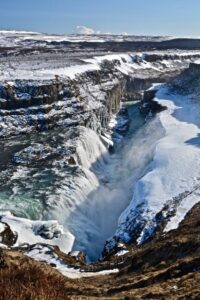 As we made our way along the Golden Circle we came to Gullfoss. To say this waterfall is powerful is an understatement. The crashing of the water over the ledge ricochets through your body and is so loud in addition to the high winds that it can be deafening. Its truly a site to behold and definitely commands your attention. Unfortunately, the path down to get up close to the falls were closed off due to the snow and ice but we could still walk the upper portion of the cliff which provided another spectacular perspective.
As we made our way along the Golden Circle we came to Gullfoss. To say this waterfall is powerful is an understatement. The crashing of the water over the ledge ricochets through your body and is so loud in addition to the high winds that it can be deafening. Its truly a site to behold and definitely commands your attention. Unfortunately, the path down to get up close to the falls were closed off due to the snow and ice but we could still walk the upper portion of the cliff which provided another spectacular perspective.
After exploring the ledges of Gullfoss we headed down to the town of Flúðir to find the Secret Lagoon, albeit not so secret anymore. The natural pool with little spouting geysirs surrounding it makes for a unique Icelandic experience. The sand and stone floor of the pool, edges lined with rock, and the steam rising around you makes it an all around relaxing experience after a busy day exploring. The elf houses surrounding the pool add a cute touch. That evening we cooked at our campground under a beautiful sunset.
The next morning we said goodbye to our campsite and headed back on the Ring Road to head to Skaftafell. The beautiful thing about the Ring Road is that the landscape is constantly changing and makes your drive so much more interesting. There are plenty of points of interest signs to stop on the way and I believe I saw more waterfalls on the ring road than I have seen in my entire life. We made many stops on our journey that day. We pulled over at a rest stop to look and walk among the vast lava field formed by an eruption from the 1700s. The landscape is pebbled with pilloughed volcanic rock that gives it a bubbled type look that stretched for miles.
We then pulled over in the small village of Kirkjubæjarklaustur where there is an odd rock formation called Kirkjugólf. This means, “Church floor” and you understand why its called that once you see it. The shape of the naturally formed hexagonal stones looks like a perfectly laid stone floor from an old church.
From there we continued east and made various stops at beautiful waterfalls that could be seen streaming down from cliffs or cutting through the landscape right from the road. There was always ample space to pull over and enjoy these beautiful phenomena and provided us many photo opportunities.
After our few details we finally made it to Skaftafell. Once we arrived to the visitors center parking lot we realized we could walk from here to the Svartifoss waterfall as well. So we decided to do the hike towards Svartifoss first and then we would hike to the glacier.
Read more: National parks in Iceland
Again we were blessed with a beautiful sunny day and our hike to Svartifoss provided us with some picture perfect views unobstructed by clouds. The hike from the visitor centres parking lot is a steady uphill hike but once you reach the top and the view opens up to Svartifoss your efforts have been immediately rewarded. The beautiful basalt columns provide a perfect backdrop for this gorgeous waterfall. If you’re a photographer you need to exercise you patience here as there are many people trying to create that iconic photo of Svartifoss
After we made our winding way down from Svartifoss we headed east from the parking lot and walked the much flatter trail to the Skaftafellsjökull glacier. You can see this looming giant from a great distance but as you walk the 5km easy trail closer you really start to appreciate its enormous size. The trail ends once you arrive to the lake at the base of the glacier and you can take in the gorgeous view of this glacier tongue. As you look up you notice all the bright blue ice, black ash, enormous crevices, and can really appreciate how this giant has carved its way through the mountain surrounding it.
From Skaftafell we drove another 45 minutes east to another one of Iceland’s grand attractions the Jökulsárlón glacier lagoon. This lagoon is full of various sized floating icebergs in its waters that are nothing short of spectacular. The sun shining on the ice can make them look like glass, and the waters surface acts like mirrors reflecting the icebergs various shapes. We even saw playful seals diving down and popping up many meters away from were the submerged. Since we were there in April and towards the end of the day there was not the usual throngs of tourists, and as we walked a short distance around the lagoon we felt like we had it completely to ourselves besides the seals.
Just across the highway is Diamond Beach. So appropriately named as the chunks of broken off icebergs that have escaped the lagoon to the ocean and then washed ashore create these brilliant white/crystal clear shapes on the contrasting black sand beach. When the light hits them just right they sparkle like diamonds. We took in the moment of this beautiful surround and were a bit saddened as we realized this was as far east as we had planned on travelling.
The next day we turned back west and headed towards the picturesque town of Vik. There is a beautiful church on the top of the hill in Vik that provides a spectacular view of the Reynisdrangar basalt stacks just off the coast. These rocks are also known as the Troll Rocks.
 After taking in the view from around the church we made our way to Reynisfjara Black Sand Beach. The beautiful black sand beach, with the black rocks jutting from the ocean, as well as the basalt columned sides of the cliffs really provide a stunning site. It is one of the most popular destinations on a south coast road trip and there was many tourists there on this sunny day. The power of the ocean can be felt as you stand on this beach and the waves crashing against the shore are almost hypnotizing, creating this bright white froth against the black sand. You have to have your wits about you while on this beach as the waves can be deceivingly large and creep up the beach much farther than you would expect.
After taking in the view from around the church we made our way to Reynisfjara Black Sand Beach. The beautiful black sand beach, with the black rocks jutting from the ocean, as well as the basalt columned sides of the cliffs really provide a stunning site. It is one of the most popular destinations on a south coast road trip and there was many tourists there on this sunny day. The power of the ocean can be felt as you stand on this beach and the waves crashing against the shore are almost hypnotizing, creating this bright white froth against the black sand. You have to have your wits about you while on this beach as the waves can be deceivingly large and creep up the beach much farther than you would expect.
A short drive around the bend we ascended up the cliffs to have a view of Dýrhólaey. As you look back east over Reynisfjara you can really appreciate the contrast of the white on black. As well as you can feel and hear the power of the waves crashing against the cliffs as your looking west to Dyrhólaey.
As we continued our drive back west we stopped at Sólheimasandur to see the DC plane crash site. This is the site of an American Plane that crashed in the 1970’s. The landscape here is desolate and stretches on as far as the eye can see. Even though you can see the plane in a distance do not be fooled this is a long walk! It truly is an eerie site to see, as the area around is so flat and barren. It really creates a spooky atmosphere around this crashed plane.
After our long walk back from the plane site we headed to Skógafoss waterfall, one of the highlights on a south coast road trip. You can climb up the many stairs to the top to take in another angle of this waterfall, and hike a trail following the river that supplies the water. You can also walk down to the base of the fall and be misted by its crashing water.
From here we actually made a mistake and ended up driving right past the Seljalandsfoss waterfall which is another top site to see on a south coast Iceland road trip and we ended up driving all the way to Selfoss. As we only had one more day for our road trip we decided not to back track and spent the night at a campground in Selfoss.
Our last day with our van was the only day we had with grey skies (we had been extremely lucky). We started off with the Kerið crater. Typically, the water is a vivid aquamarine colour, for us though, since it was April the crater was still covered in ice. Our colours were not as striking as what typically is seen at this sight but the crater was making mysterious cavernous type groans that were coming from the centre under the ice. It added a mysterious and almost eerie element to viewing this spectacular landform. You can walk around the top of the crater and then you can descend down to its base near the waters edge (for us the ice edge).
As it was our last day we had planned to make our final stop at the Blue Lagoon so we decided to tour around the Reykjanes Peninsula before our check in time at the Blue Lagoon. We stopped at the Strandakirkja church on the southern shore. This church rises from the coast and has been said to have been a beacon for those travelling at sea.
We then went inland to Seltún Geothermal area. There is a boardwalk that you can take that goes between the extremely hot mud pots, bubbling geysirs, and vents of steam pouring out of the earth. The mineral deposits from this geothermal activity creates colour sediments on the landscape. Though it does have a strong smell of sulphur the area is extremely interesting to walk through and quite warm to walk through, even on a cool cloudy day.
Just a short drive past Grindavik we came to Brimketill. Brimketill is a large natural pool that sits at the bottom of a cliff on the oceans edge, that has been carved our by the pounding of waves on the black lava rock. The pictures we had seen were a peaceful and calm pool by the ocean but what we experienced was the complete opposite. In the non-summer months the ocean is much more fearsome. There is a small platform at the top of the cliff that you can view the area from. This platform provides a spectacular view however it is still a bit frightening. It is not particularly high from the crashing waves, and the waves were rolling in hard and high. At times we were thinking one would come and sweep us right off the platform. The spray was surrounding us and the sound of the waves vibrated through our bodies when they crashed upon the cliffs. We did catch the Brimketill pool but you needed to be quick with your camera to capture it before another wave devoured it. Though this was not exactly what we were expecting it was a great stop as it really made us appreciate and respect the power of nature and the ocean.
As we pulled up to the Blue Lagoon we remembered how much of a tourist attraction it was. So many people had not surrounded us in the whole week we had been driving around the island. Once we got used to all the people the Blue Lagoon was a fantastic and relaxing way to spend our last evening on the road. We lounged in the various warm waters of the lagoon, enjoyed our silica facemask, and cool beer as we reminisced on our days on the road. After many hours relaxing in the warm pools of the Blue lagoon we packed up our van and headed to Garðskagi to spend our last night by the ocean. We fell asleep among the stars, the crashing ocean waves, and the glow of the two beautiful lighthouses.
As we made our drive in the early morning to the rental can drop off we were sad to say goodbye to what was our home on wheels this past week. We were also sad to say goodbye to this beautiful island that we loved exploring but we knew in that sadness to go that we would definitely be coming back someday. So we won’t say goodbye Iceland, we will say until next time.
Read more: Around Iceland in 8 days
Happy Camping! #CamperStories
Iceland Travel Guides
If you like what you see, please subscribe to our YouTube channel!

